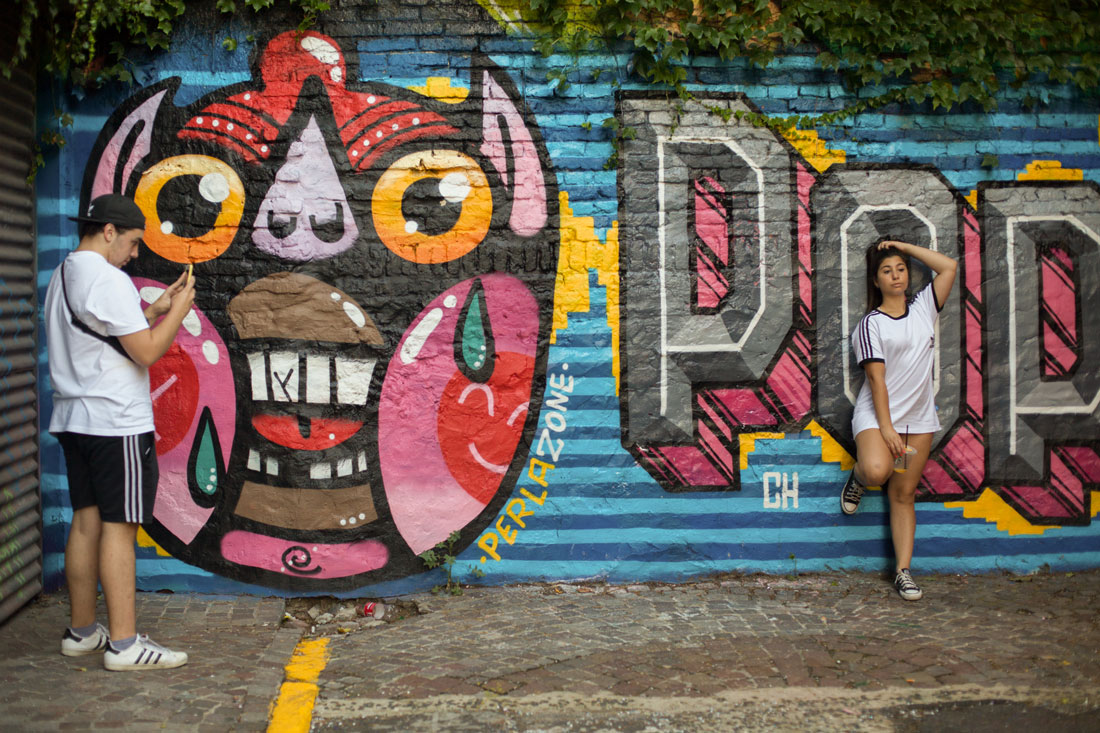Clara Seung Lee and Karleigh Michelle Stone
Medill Reports
BUENOS AIRES —
The city of Buenos Aires bares its beauty in multi-faceted ways, from the sensuous tango dancers luring tourists in the streets of Caminito, to the aroma of Porteño cuisine that triggers an immediate appetite to anyone walking by during lunch or dinner time.
But, arguably, one of the most underrated features of Buenos Aires is its love for and dedication to street art.
“Street art” has its stereotypes. People will most likely think of Banksy, Shepard Fairey, or even illegal graffiti. But there is absolutely nothing illegal or secretive about the murals and public art seen on walls throughout Buenos Aires. Street art is not just accepted, it’s very much appreciated by this South American city.
Artists from abroad — including female artists and artists with political agendas — are all welcome to paint without restriction, just as long as they get the permission from the property owners.
In the middle of the mid-summer heat, Martín Ron, Nicolás Romero, and Tano Verón all seemed happy to discuss their artwork with a paintbrush in hand.
https://vimeo.com/329725846
Martín Ron works under the broad theme of large-scale photorealism. His pieces are famously plastered on extremely tall buildings, though he confesses to being afraid of heights. Ron is also a notable artist who is frequently commissioned by the city to beautify the bare walls of building with his works. Ron says Buenos Aires is a fertile place for urban art to flourish. “It was never seen as vandalistic or illegal as it [is] in other cities,” he said.
Nicolás Romero typically showcases work of a more whimsical nature, using lighthearted imagery like cats, Coke cans, and cereal boxes. But often hidden among that whimsy is a carefully loaded political and philosophical message. Though Romero admires Buenos Aires as a place that serves art like a laboratory filled with different elements, he has also enjoyed working in other international cities like Detroit.

Street artist Tano Verón is also a graphic designer and a teacher at the University of Buenos Aires. His style differs from Romero and Ron, using mostly typography as his medium. Verón says the murals adorning the streets of Buenos Aires are not a trend; they’re an essential part of the city’s identity. “Anyone can express what they feel, what they think,” he said. “It does not matter if he is a renowned muralist with a lot of technique. The walls are for the people.”
Ron says that openness draws more than just Argentines to the people’s walls. “Buenos Aires is a very particular city,” he said. “In fact, it was always a favorite place for foreign urban artists, because they find freedom.”
Melody Vigolo contributed reporting in Buenos Aires

